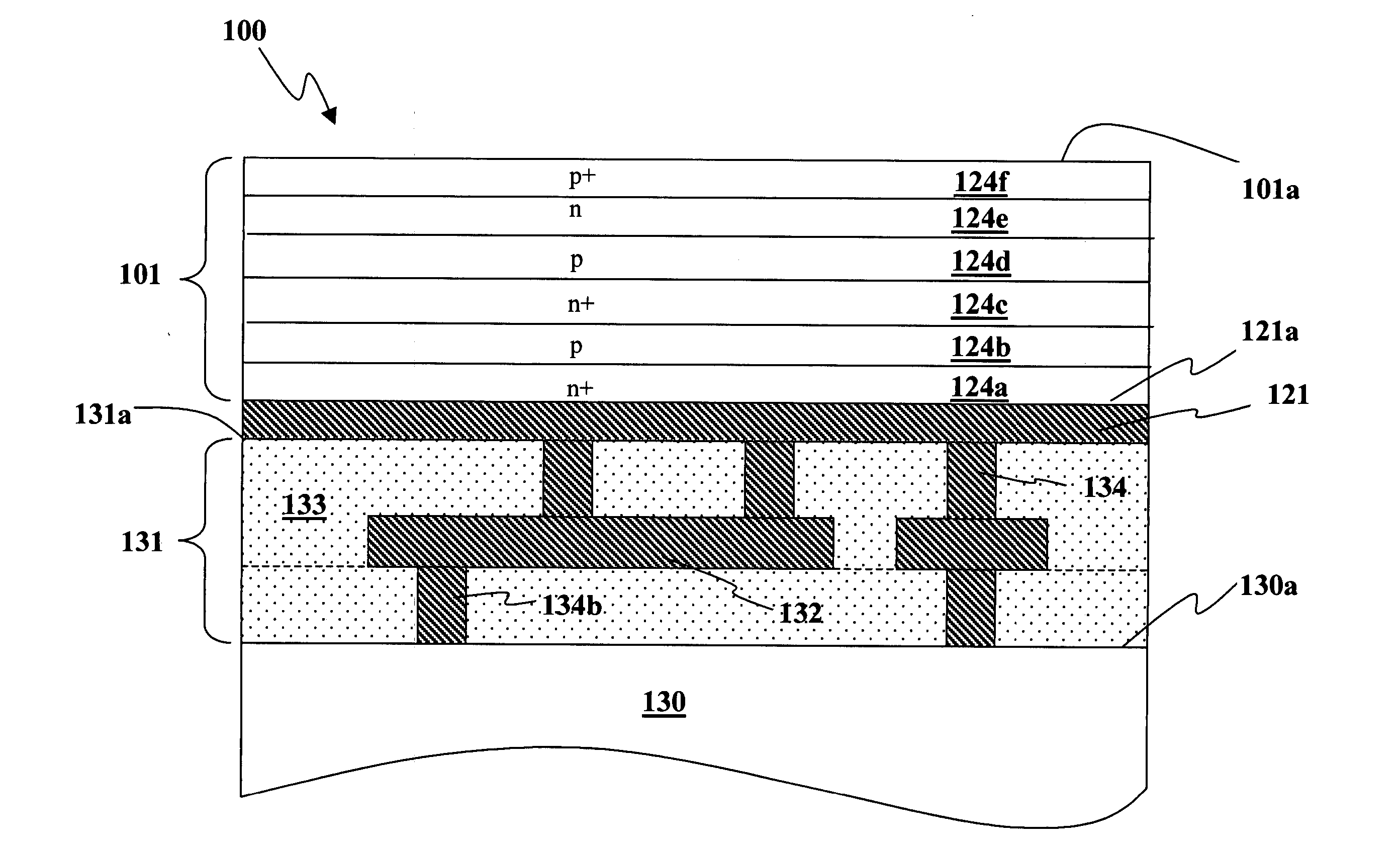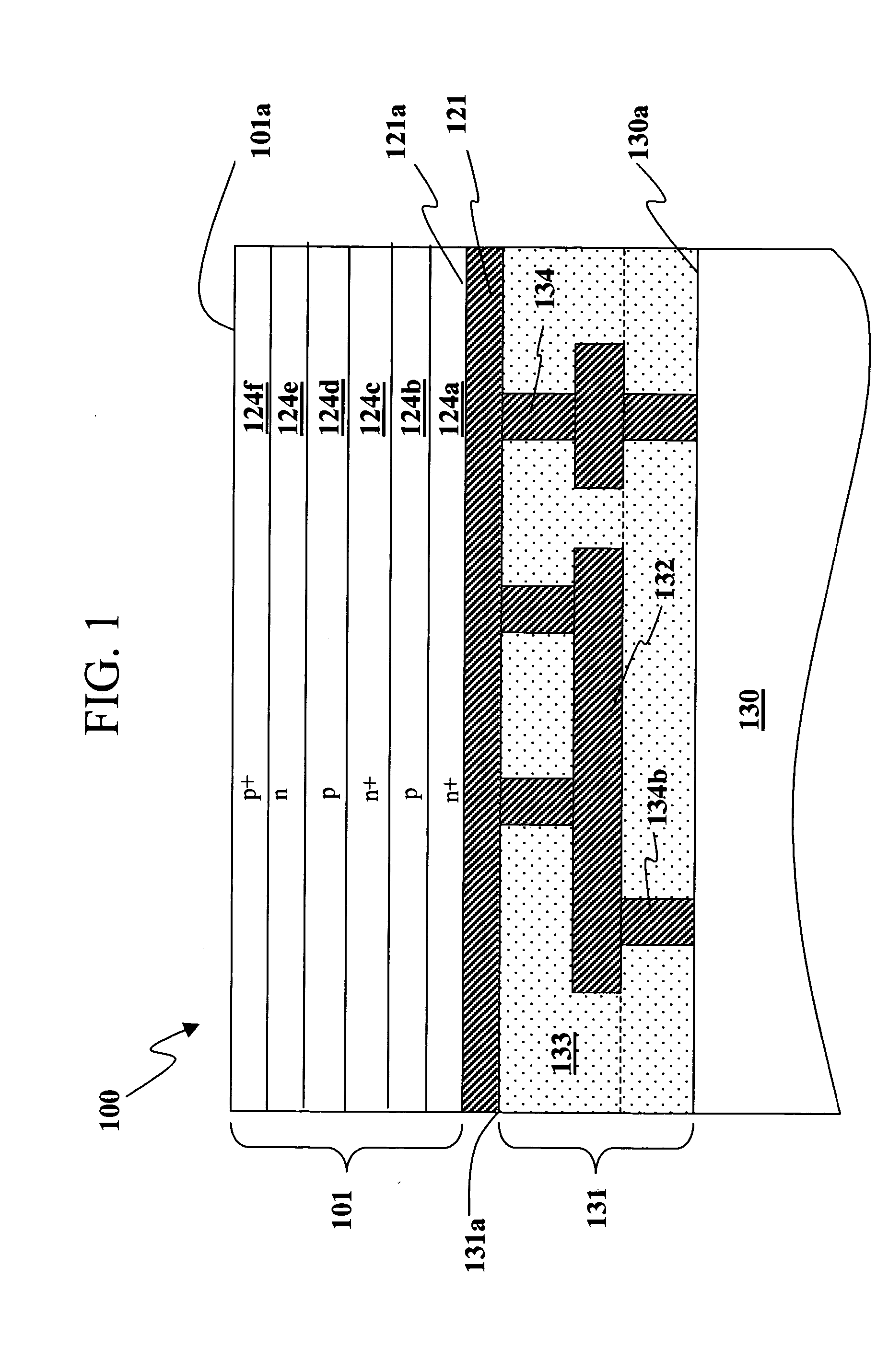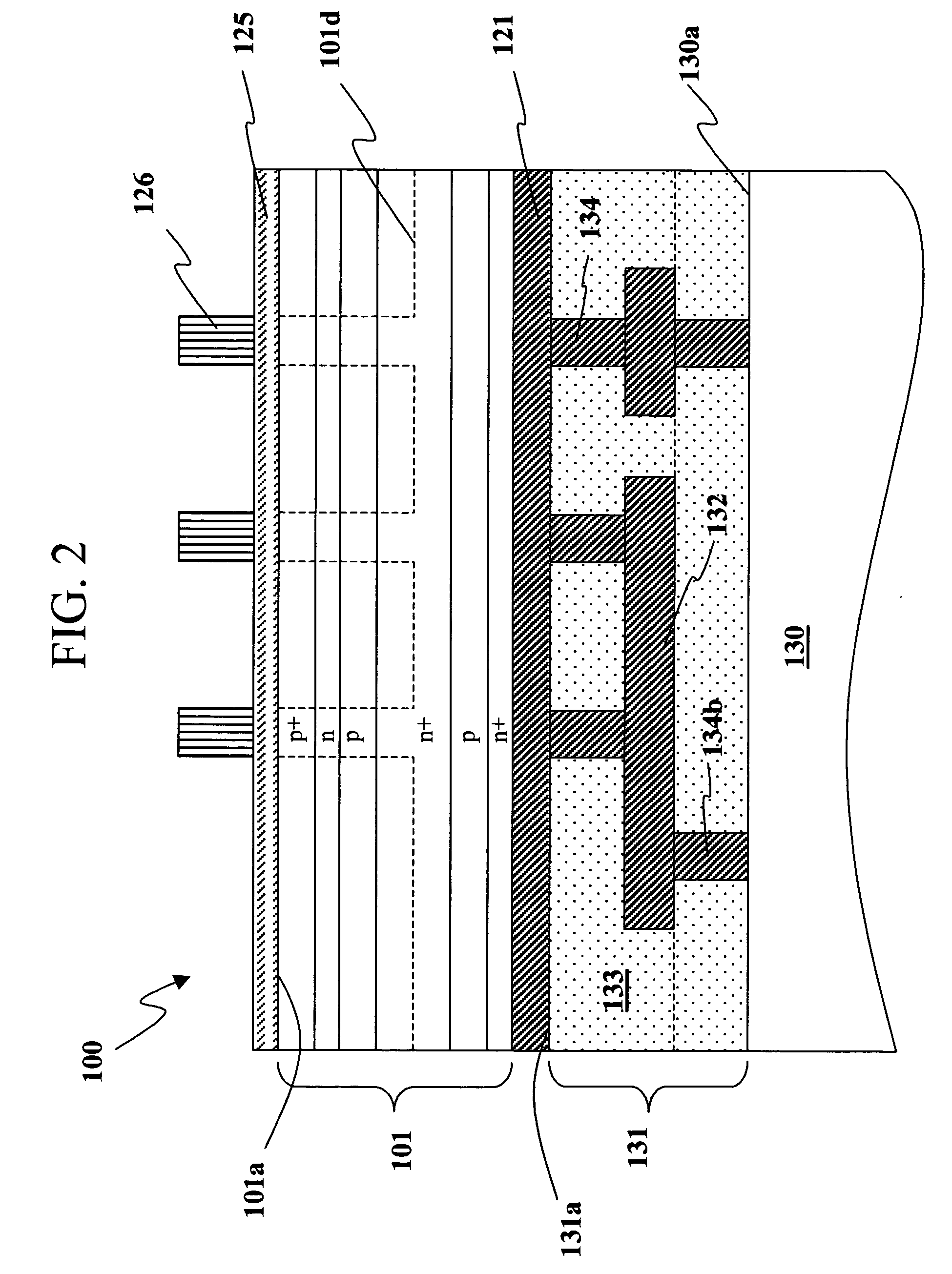Semiconductor memory device
a memory device and semiconductor technology, applied in the direction of semiconductor devices, semiconductor/solid-state device details, radiation control devices, etc., can solve the problems of 64-bit computer chips needing more devices, laterally oriented devices consuming significant amounts of chip area, and increasing the cost of manufacturing equipmen
- Summary
- Abstract
- Description
- Claims
- Application Information
AI Technical Summary
Benefits of technology
Problems solved by technology
Method used
Image
Examples
Embodiment Construction
[0015]FIGS. 1-12 are simplified sectional views of steps in fabricating a semiconductor memory circuit 100 in accordance with the present invention. In the following figures, like reference characters indicate corresponding elements throughout the several views. In FIGS. 1-12, only a few memory devices are shown in circuit 100, but it should be understood that circuit 100 generally includes a number of memory devices and that only a few are shown for simplicity and ease of discussion.
[0016] Circuit 100 can be included in a computer chip where the memory devices are positioned above the computer circuitry. The memory devices are typically coupled to the computer circuitry through interconnects which include a conductive line and / or a conductive via. Circuit 100 has several advantages. One advantage is that the memory devices are positioned above the computer circuitry which is desirable since the memory devices typically occupy much more area than the computer circuitry. Another adv...
PUM
 Login to View More
Login to View More Abstract
Description
Claims
Application Information
 Login to View More
Login to View More - R&D
- Intellectual Property
- Life Sciences
- Materials
- Tech Scout
- Unparalleled Data Quality
- Higher Quality Content
- 60% Fewer Hallucinations
Browse by: Latest US Patents, China's latest patents, Technical Efficacy Thesaurus, Application Domain, Technology Topic, Popular Technical Reports.
© 2025 PatSnap. All rights reserved.Legal|Privacy policy|Modern Slavery Act Transparency Statement|Sitemap|About US| Contact US: help@patsnap.com



